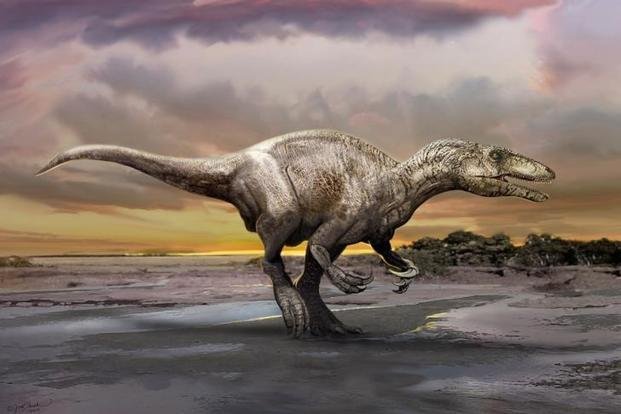Fossil of dinosaur swept away in ancient Australian river found
Washington: In sandstone beside the high tide check at the edge of Bass Strait in southeastern Australia, researchers have uncovered fossils of a two-legged, turkey-sized, plant-destroying dinosaur evidently cleared in an extensive, intense old waterway.
Scientistss on Thursday said the fractional skeleton of the beforehand obscure beastie, named Diluvicursor pickeringi, that lived around 113 million years back gives knowledge into the variety of dinosaurs that occupied Australia amid the Cretaceous Time frame when it was as yet associated with Antarctica.
"Skeletons of dinosaurs from Australia are exceptionally uncommon," said College of Queensland scientist Matthew Herne, noticing that Diluvicursor brings to just 19 the quantity of Australian dinosaurs that have been named to date.
Diluvicursor's remaining parts were found among a scrambled accumulation of expansive fossilized tree trunks additionally obviously cleared down the stream amid a surge. The site is on the south shore of the territory of Victoria, around 105 miles (170 km) from Melbourne.
Diluvicursor was around 7-1/2-feet (2.3 meters) in length. Herne said it was "similar to an expansive trained turkey in weight, obviously any longer than a turkey on account of its tail." The fossils incorporated a relatively entire tail, the lower some portion of the correct leg and the greater part of the correct foot.
It lived nearby meat-eating dinosaurs around 20 feet (6 meters) in length, and in addition defensively covered dinosaurs, turtles, wench estimated warm blooded animals and flying reptiles called pterosaurs. Herne said Diluvicursor, an individual from a dinosaur amass called ornithopods, was like another little, two-legged herbivorous dinosaur called Leaellynasaura that inhabited about a similar time and whose remaining parts were uncovered around 9 miles (15 km) away.
The two may have involved diverse biological specialties and eaten distinctive plants. Leaellynasaura was all the more daintily manufactured, had a more drawn out tail and may have been a more coordinated sprinter.
"A similarity can be found in the sort of assorted variety found in the kangaroos and wallabies in display day Australia who involve altogether different specialties, from open fields to thick woodland environments," Herne said.
Diluvicursor wandered a forested wide fracture valley floodplain amongst Australia and Antarctica, which stayed associated until around 45 million years prior.
"The jury's out on the atmosphere," Herne said. "Some trust that the atmosphere was icy with winter ice, while others propose the atmosphere was hotter or more mild."
Its family name, Diluvicursor, signifies "surge sprinter." Its species name, pickeringi, respects the late scientist David Pickering.Reuters

Thanks for the beautiful article...